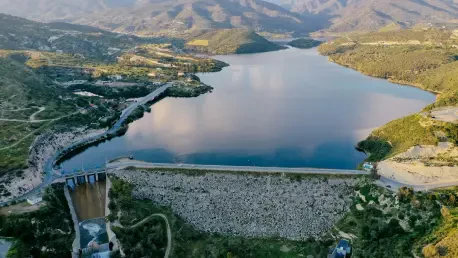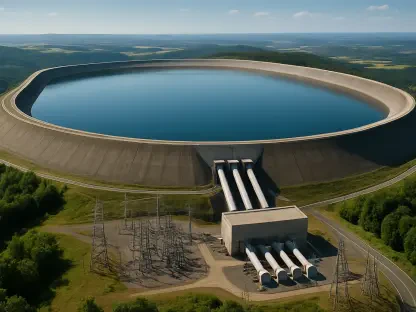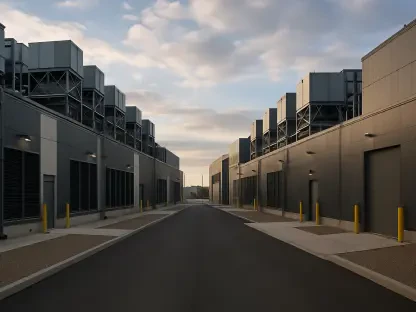In a dramatic twist in Florida’s water management politics, state lawmakers recently decided to rescind a substantial $400 million allocation earmarked for a large-scale reservoir project in Central Florida. Originally intended to assist in the storage and treatment of stormwater and agricultural runoff, the plan was seen as a pivotal measure for protecting the Indian River Lagoon. Spanning 5,000 to 7,500 acres, the reservoir would have marked one of Florida’s most significant infrastructural investments in water management. However, controversy arose when the project’s approval bypassed the conventional legislative review process, raising serious concerns over accountability and transparency. With no legislators claiming sponsorship, the move appeared opaque to stakeholders, thereby inviting both public and political scrutiny. This debate underscores wider conversations about how essential environmental protections should be balanced with fiscal responsibility and legislative oversight.
Environmental Concerns and Public Scrutiny
The proposed reservoir project faced sharp critique from prominent environmental organizations such as the Sierra Club, St. Johns Riverkeeper, and the Florida Springs Council. These groups argued that the project received inadequate public scrutiny and lacked proper scientific validation and planning. They openly questioned the environmental impact of transferring water from South Florida, a region already plagued by toxic algal blooms, to areas further north. This move, they contended, would only exacerbate pollution within the St. Johns River system. Environmental advocates claimed that simply diverting resources to alleviate issues in South Florida would not solve inherent water management problems but could potentially transfer those problems elsewhere. Critics argued that without tangible conservation benefits, the reservoir project stood to repeat a historically flawed strategy of water mismanagement and ecological neglect.
Despite its potential benefits, transparency and clarity concerning the project’s environmental impacts were notably absent, fueling broader concerns. The water management district responsible for the project did not request the allocated resources, further muddying the waters regarding the necessity and potential effectiveness of the initiative. With past legislation having diverted sewage sludge from South Florida to the St. Johns River farmlands, questions about water quality and management strategies intensified. The reservoir project seemed to perpetuate a pattern of inadequate stewardship that many critics argued should have been addressed and rectified rather than expanded upon. This resistance played a crucial role in legislative decision-making, serving as a catalyst for recalling the funds that had been earmarked.
Political and Institutional Reactions
Political figures and institutions found themselves divided in their response to the initiative. Initially, influential leaders such as Senate President Kathleen Passidomo and House Speaker Paul Renner indicated strong support, emphasizing the future potential of this project in addressing Central Florida’s increasing water demands. Indeed, the Department of Environmental Protection echoed this sentiment, suggesting that the reservoir could play a critical role in sustainable water management strategies. Yet the growing backlash and lack of clarity on various fronts culminated in an alliance of stakeholders opposing the project, thereby swaying the legislative decision to retract funding. The move to rescind funds underscored a growing unease about prioritizing speculative infrastructural endeavors over immediate, tangible environmental conservation actions.
As the discussion intensified, it became apparent that the implications of lifting the funds transcended the reservoir project itself. The decision highlighted ongoing tensions in Florida’s water management policies, where development priorities often clashed with environmental and ecological sustainability. The debate surrounding this project signified a necessary reevaluation of how future water management projects should be assessed, ensuring thorough scientific assessments, public engagement, and legislative transparency. Moreover, public and political sentiments signaled that greater accountability and clarity in environmental initiatives would be demanded moving forward.
Key Takeaways and Future Considerations
Environmental groups like the Sierra Club, St. Johns Riverkeeper, and the Florida Springs Council sharply criticized the proposed reservoir project. These organizations argued that the initiative lacked sufficient public scrutiny and wasn’t backed by sound scientific planning or validation. They expressed concerns over the environmental repercussions of transferring water from South Florida, already dealing with toxic algal blooms, to northern areas. Critics believed that such an action might worsen pollution in the St. Johns River system rather than address water issues meaningfully. They contended that redirecting water merely shifts problems instead of solving the core water management challenges. Transparency regarding potential environmental impacts was notably lacking, further deepening skepticism. The responsible water management district hadn’t requested allocated resources, raising questions about the project’s necessity. Past measures had already moved sewage sludge from South Florida to the St. Johns River, worsening concerns. Ultimately, this opposition influenced legislative decisions, leading to a recall of allocated funds.









